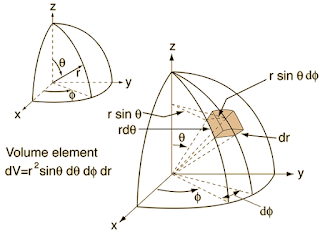On the use of Scaling Relations in Astronomy
Scaling Relations
In astronomy, indeed in science, there is a dizzying array of constants, equations, and units that all need to be kept straight if we want physics to work. While it is good to know Kepler's 3rd Law for a planetary system, \[ P^2 = \frac{4 \pi^2 a^3}{G\,M_\star} \] we can also use Kepler's original form, which was a scaling relationship, \[ P^2 \sim a^3 .\] The scaling form of Kepler's law works because it is specifically for the solar system in solar system units. It says that for a planet orbiting the sun we know that \(P^2\) scales with \(a^3\). Scaling must always be done with respect to something we know or by using ratios we know. e.g. If we know two objects have some intrinsic size ratio (say two hard spheres), we can determine their relative distance by checking their observed sizes.
Notice that in the scaling version of Kepler's 3rd law the various physical/mathematical constants are no longer present. Both sides of the equation are dimensionless. Scaling relationships are dimensionless equations. The dimensions have been factored out. We can do this by noting following, \[ \frac{G}{4\pi^2} = \frac{a^3}{P^2 \, M_\star} .\] \(\frac{G}{4\pi^2}\) is constant; therefore, this equation is true for any valid combination of \(P\), \(M_\star\), and \(a\). Using the Earth-Sun system, we can plug in values and determine the value of \(\frac{G}{4\pi}\). If we plug in values in cgs, we find that \[ \frac{G}{4\pi^2} = \frac{6.67}{4\pi^2}\times10^{-8}\, { cm^{3}\, g^{-1}\, s^{-2}},\] or we can plug in the values in the more convenient units and get, \[ \frac{G}{4\pi^2} = 1.\ \ \ { AU^{3}\, M_\odot^{-1}\, yr^{-2}}.\] If we use \(AU - M_\odot - yr\) units, instead of \(cm - g - s\) units, we can write, \[P^2 = a^3\,M^{-1} .\] This can also be written, as is often done in astronomy to prevent ambiguity, since we primarily use cgs, as: \[ \left(\!\frac{P}{yr}\!\right)^2 = \left(\!\frac{a}{AU}\!\right)^3\left(\!\frac{M}{M_\odot}\!\right)^{-1} .\] This format tells the reader exactly what units to use. The point is, once you derive a squiggle \(\sim\) equation, use it. Normalize it to quantities you know. This will make the arithmetic much simpler.
Application to stellar wobble
Let's apply to this something else very useful - determining the wobble velocity of a star due to a planet. We know that the velocity semi-amplitude of a star, \(K\), due to a planet is related to the planet's orbital velocity (assume circular, \(e=0\)) by \[ K = \frac{m_p}{M_\star}v_p \] Substituting in for the velocity, in cgs units, \[ K = m_p\, (2\pi\, G)^{1/3}\, M_\star^{-2/3}\, P^{-1/3} .\] Now you can solve this every time and plug in constants, but we know that Jupiter causes the sun to wobble with \(K = 12.5~m/s\), so \[ K \sim m_p\, M_\star^{-2/3} \, P^{-1/3}\] \[ K =12.5\, m/s\ \left(\!\frac{m_p}{M_{Jup}}\!\right)\, \left(\!\frac{M}{M_\odot}\!\right)^{-2/3}\, \left(\frac{P}{12\,yr}\right)^{-1/3} \] Exoplanets are often presented in Jupiter masses, and stellar masses are almost always presented in solar masses, so having an equation in these units makes sense.
Some good numbers to remember, \[ M_\odot \approx 1050\, M_{Jup} \] \[ M_{Jup} \approx 300\, M_\oplus \] \[ 1.\ AU \approx 215\, R_\odot \] \[ R_\odot \approx 10\, R_{Jup} \] \[ R_{Jup} \approx 10\, R_\oplus \]



Comments
Post a Comment